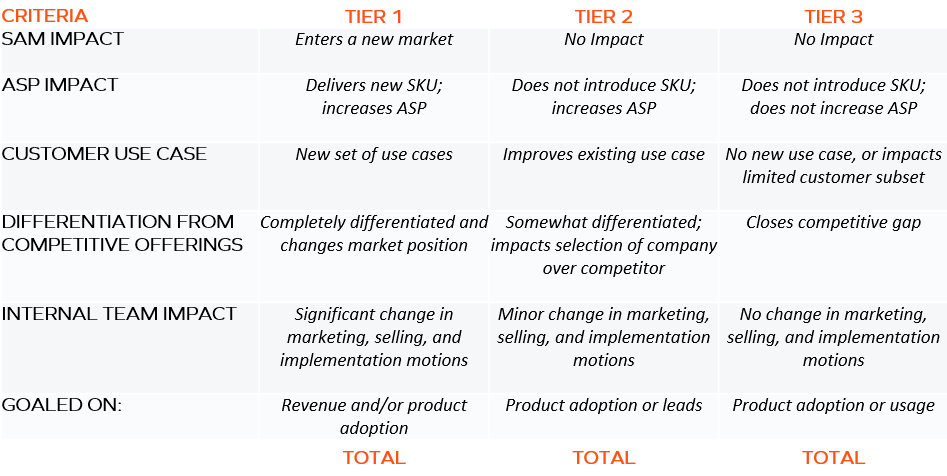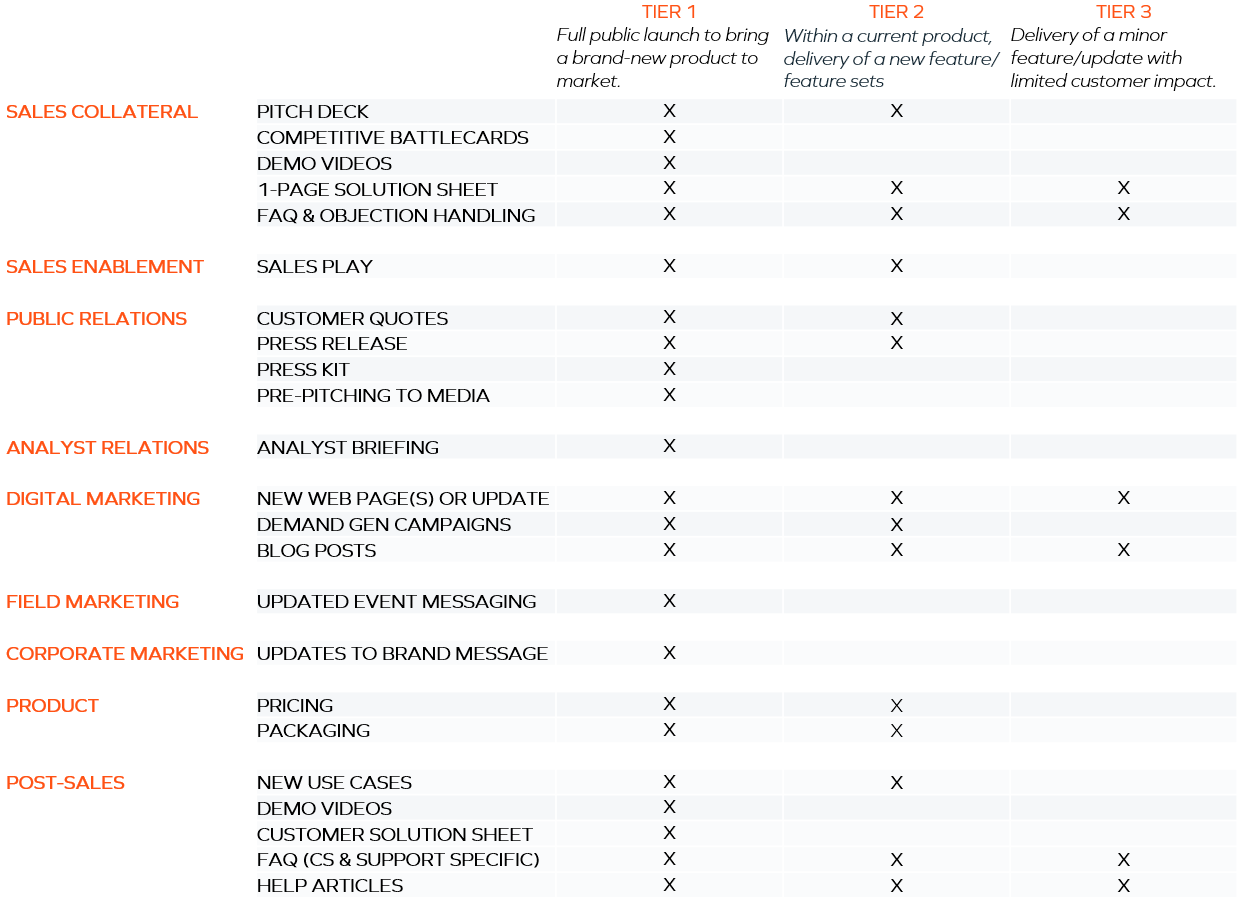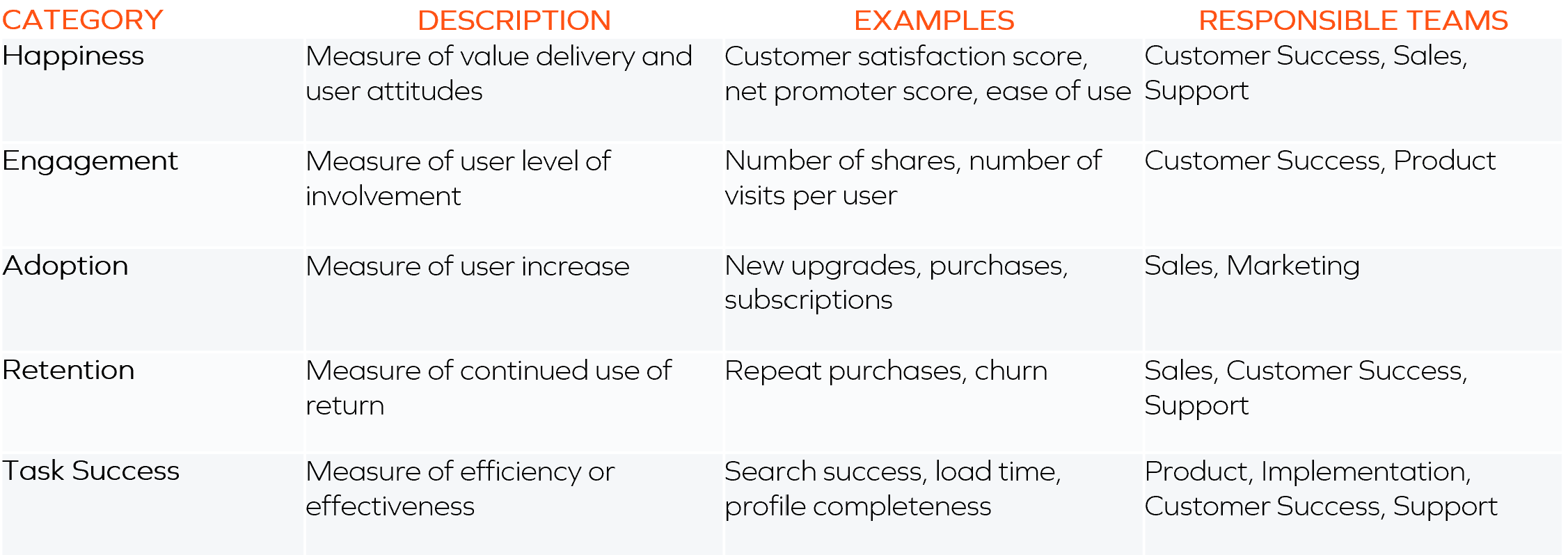Where Product Launches Are Missing the Mark – 6 Ways to Amplify Customer Impact

Growing your offerings doesn’t guarantee you’ll grow your business. New features and products increase the potential benefits to the customer with that value only realized when they use these new features and products. For your company to reach its goals and milestones, customers often need help to translate added capabilities into high adoption, low churn, and successful expansion.
Launching a new offering or feature presents a timely opportunity to deepen your relationship with customers, boost product stickiness, and develop community champions. When a product launch fails to involve a holistic approach, it leads to a poor customer experience while creating internal frustration. So why might a product launch fall short? It’s often due to silos – where internal teams preparing for the launch lack a shared customer focus, agreement on market perspective, and coordinated execution.
In the current macroeconomic environment, companies face added pressure to scale back and do more with less. It’s crucial that launch owners are deeply embedded in pre and post-sales teams to deliver real value to the customers and to the business. Here are six ways to ensure your launch meets the mark.
Let the story drive the launch.
Every launch represents a promise delivered and a step closer to your vision of the future – the very act of your product becoming more valuable and more strategic to your customer. Make it easier for your customer to realize impact by categorizing every launch into a launch tier and crafting a narrative that aligns product development with company vision, market testing, and desired customer outcome. Here are two components to do so:
Use a Tiered Launch Model
How will a launch impact customers? Does the launch expand your company’s serviceable addressable market (SAM)? Does the launch require an entirely new sales motion? Does this launch present any risks to existing customer environments? Is additional training/QA with Delivery, Support, or Technical Account Management teams necessary?
Different answers to these questions require various levels of preparation and resources. By categorizing a launch into one of three tiers, you can efficiently plan and calibrate your organization’s expectations.

Example Tiered Launch Matrix
Instructions: For each row, choose one option. When between two options, select the more conservative. Tally each column, and the column with the highest score corresponds to your suggested tier. You may also have multiple stakeholders complete the chart and average scores across the group.

Crafting the Narrative
Prior to launching, are you able to tell the story around a new capability and how it benefits your customers? The Tiered Launch Model provides a starting point, with customer and company impact ultimately dictating the decision and strategy.
Bringing a new product to market (Tier 1) involves full communications and months of planning. Even before building, Product may write an early press release draft, and the organization expects full marketing activities. However, the narrative strategy and planning is more variable for new features and updates (Tier 2 and Tier 3).
Keep in mind that attention is limited and over-promoting low-impact features may desensitize customers and increase unsubscribes. Filter out the noise and be strategic in what you promote as new products and features. Focus and maximize the attention where it matters most.
For example, a work operating system is releasing three new features: a new reporting capability, a customizable homepage, and a visual workflow builder. By bundling minor features into a larger launch, the company delivers a more robust story around efficient project management and prioritization where each feature serves as a proof point.
On the other hand, imagine an upstart sales enablement platform that delivers a content tagging system to bring them in line with the competition. In this scenario, it’s important to craft a narrative that doesn’t highlight the earlier shortfalls to new prospects, while ensuring existing customers recognize added value around saving time and money.
Note that product effort and launch effort are not always aligned. An infrastructure overhaul represents considerable progress for an engineering team but does not necessitate broader customer communications.
Ultimately, your launches don’t exist in a vacuum. Understanding customer and competitive dynamics are key, as are timing and events. Be mindful of important industry or company events that may impact your narrative and launch timing.
A missed opportunity in this step occurs when the launch owner doesn’t engage the wider market and competitive landscape or fails to involve Customer Success’ perspective on how product development impacts customer goals, use cases, and perceived value.
Amplify the customer’s voice throughout the launch.
Product launches create a ripple effect across every team in your organization – Product, Marketing, Sales, Customer Success, and Finance. By forming a cross-functional launch team that meets on a regular cadence to set timelines and goals and assess progress, you are more likely to address potential blind spots. Each stakeholder may also bring in other members of their team, but a designated stakeholder for each function of the business assumes ultimate responsibility for their team’s task completion.
Cross-functional launch teams need a quarterback to act as a project manager to drive progress and ensure every team is aligned. You’ll want your quarterback to have deep relationships and knowledge across product, marketing, sales, and customer success and possess the ability to prioritize, problem solve, and support any off-track areas. You’ll need them to champion the market and customer perspective throughout the launch.
Companies in an earlier stage may have a product manager play this role and split their launch focus with their engineering engagements. When product marketing is formed, this role will likely shift to a product marketer because of their strategic position between sales and marketing along with their responsibilities in go-to-market strategy.
When sales, customer success, or another team is unprepared for a launch, the root cause is often a limited launch team or scope. Designating a launch quarterback with full readiness oversight ensures no team is left behind and that pre- and post-sales teams stay in step.
Launch Team
- Product Marketing (Launch Quarterback): The point person/decision maker determining launch readiness. Determines launch tier, manages timeline, and readiness across all teams, and is responsible for communicating benefits to all internal and external stakeholders.
- Product: Responsible for delivering the product against the strategic objectives of the launch. Works closely with Engineering.
- Engineering: Responsible for the “how this is built” including owning the architecture, feature set, and delivery timeline.
- Marketing: Responsible for amplifying the messaging through demand gen campaigns and executing upon PR and AR.
- Sales: Responsible for positioning the new product/features to new prospects and communicating to existing pipeline and cross-sell/upsell.
- Customer Success: Responsible for maximizing the benefits of the launch. Communicating to existing customers, supporting new users through onboarding, and ensuring that customers achieve success.
- Support: Prepared to address any break-fix issues that could arise from the new product/features.
Note that the scope and scale of the launch team varies with the launch tier. A Tier 1 launch will require months of preparation across the above teams, but a Tier 3 launch will operate on a shorter timeframe with a much more limited team.
Plan monitoring and feedback loops early.
In the planning phase, one of the first launch activities will be to collectively define the launch success criteria as a team. These metrics and goals will be the dashboard (and warning lights) to determine if the launch achieves the desired experience for users and the company.
The launch team will also establish the cadence of revisiting these metrics post-launch. Marketing, Sales, Product, Engineering, Customer Success, Support, etc. all have their own KPIs, and the launch team is responsible for getting everyone in the same room to agree on shared success.
Establishing these success criteria and the cadence of revisiting these metrics allows teams to:
- Have clear responsibilities and goals.
- Track these responsibilities.
- Respond to unexpected results in a prompt and coordinated way.
- Proactively develop game plans for different scenarios.
As an example, refer to the below summary of the HEART framework, developed by Kerry Rodden of Google (original text here, Rodden 2015):

Mine your support channels for trends and insights.
Support teams are a gold mine pre- and post-launch. Prior to launching a new feature/product/service, work with your Support teams on analyzing ticket trends related to the launch. They will help spot unintended consequences early on.
Post-launch, monitoring any spikes or cohorts across Support can also help you prioritize the most critical fixes related to key accounts or those creating the most noise.
Deliver enablement and collateral beyond sales.
The focus of many launches is equipping Sales with a wealth of collateral and enablement. Now that we’ve built it, how do we sell it? There are updated slides and solution pages, demo videos, FAQs and objection handling, trainings, sales plays, and more. What about post-sales teams like Delivery, Customer Success, and Support? What about your implementation partners?
Often Sales materials and trainings fall short for post-sales teams. Once you sell it, how do you make sure your teams can help customers use the new product/feature and fix it too? Are they equipped with sufficient customer facing documentation?
The more technical the product/service, the more likely your post-sales team will need more comprehensive training. They’ll be fielding a wide range of needs, objections, and questions from customers. Based on their familiarity with customer-use cases, post-sales teams (i.e., Customer Success) can have a deeper understanding of the exact impact on specific customers—and tailored collateral and enablement can ensure they help proactively open the door to upsell or mitigate a disgruntled churn-risk.
Engage the economic buyer or plan for churn and contraction.
The users of your product/service often are not the economic buyer who signs off on the initial sale and at renewal. As your product evolves and becomes more valuable, do the buyers understand the additional value that your suite of offerings have delivered to their business? It’s easy to overlook this persona in a launch because they’re not the primary target of either your pre- or post-sales teams. While they may not impact metrics like NPS score or product usage data, addressing them is critical to optimizing for long-term retention and upsell.
It’s important to engage the economic buyer, and this can be a challenge. Product launches can provide a natural opportunity for doing so. Whether it be through quality thought leadership, a Customer Advisory Board, or targeted meetings, ensure the economic buyer is prioritized during the launch. As macroeconomic uncertainty grows, contracts will likely be more heavily scrutinized, and establishing value well-ahead of renewal can reduce friction when it’s time to sign.
An immense amount of effort and resources go into the development of your products. By taking a cross-functional approach that keeps your customers top of mind, you maximize your leverage and chance of success. We invite you to use the above pillars in your next launch, and as part of your planning, you can find a sample product launch checklist by completing the form below.










